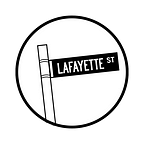Supreme’s innovative business model
Let’s talk about Supreme. The streetwear giant is one of the most sought after brands in the resell market these days. Some say that Supreme is the originator of the ‘hype’ era we are living in today, but where does all this hype surrounding the brand coming from?
In 1994, Supreme opened as a skate shop in Lower Manhattan. The founder, James Jebbia, who had previously worked with skateboarder and designer Shawn Stussy, has said he was drawn to the edgy and effortlessly cool style of the young skaters he knew in the city. Over the past 26 years, the brand has expanded at a snail’s pace, reluctant to relinquish Supreme’s standing as a symbol of the underground, in-the-know streetwear fashion scene. It was a decade before Supreme opened a second location, in Los Angeles, and today the brand has two stores in New York City, six in Japan, and outposts in Paris and London, while a location in San Francisco opened in 2019.
Supreme appealed to young skateboarders from lower manhattan. It was a brand made by skateboarders to skateboarders. The underground appeal of the brand is one of the brand’s biggest successes. Once it was adopted by skateboarders or the ‘cool kids’, everyone wanted to be a part of it. As the brand started to grow, their influence made them able to reach the bigs boy table and to collaborate with big brands like Nike, Stone Island, Comme des garcons, or the North Face. The way these collaborations go through is usually taking an already existing product of the collaborators, Supreme makes it look all supreme-ish and then sells it with a markup. What is important is that Supreme does not produce these products, so they are basically making money by placing their name on a product that is not theirs and they use these name brands as a ladder to achieve more powerful collaborations.
The other important factor that made Supreme famous was their somehow accidental business plan. Supreme has built hype around its brand with its innovative business model. The company artificially maintains the scarcity of its products by creating two collections spanning two seasons every year. Every Thursday acts as a “drop day” during which a limited number of products from that season’s collection are released. The “drop” is a sales tactic employed by several streetwear brands to “supercharge the traditional supply-and-demand model”.
Information is usually slowly leaked via one small announcement, and then amplified on social media through celebrities, collectors, and influencers. Some die-hard fans go as far as to pay an e-commerce company to deploy web bots to connect to the Supreme server at the moment of the drop. This model dates back to Supreme’s early days in which they produced small quantities that matched their demand in order to avoid stocking. Another important quality of their business model is cheap manufacturing. Their more basic items like t-shirts and hoodies are usually low-cost items from brands like Gildan or Hanes in which they print over and of course, the price does not reflect the quality of the piece but the brand you are representing.
The brand strength and their somehow innovative business model made them the most desired streetwear brand in the market and it shows. At the corporate level, Supreme makes around 200 million dollars in yearly revenues and was currently valuated at 2.1 billion, following an acquisition by VF Corporation (the owner of other lifestyle brands like The North Face, Vans, and Timberland, frequent collaborators of the New York brand). This acquisition marks the end of Supreme as an independent label and a new beginning as a part of a fashion conglomerate. Will this new era change Supreme and change its underground aesthetic, or are Supreme fans not interested anymore in their image and are just buying it for the logo?
